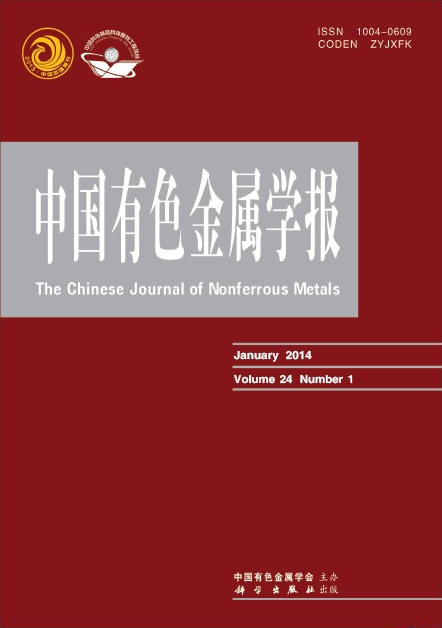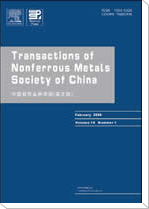中国有色金属学报(英文版)
Transactions of Nonferrous Metals Society of China
| Vol. 14 No. 1 February 2004 |
dilute Al-Sc and Al-Sc-Zr solid solution①
(School of Materials Science and Engineering, Beijing University of Technology,
Beijing 100022, China)
Abstract:Six alloys with different compositions of Al-0.1%Sc, Al-0.3%Sc, Al-0.3%Zr, Al-0.1% Sc-0.1%Zr, Al-0.3%Sc-0.1%Zr and Al-0.3%Sc-0.3%Zr were prepared by casting in a wedge shaped copper mould. The hardness test, microstructure observation, and DSC thermal analysis were applied to fully investigate the solidification behavior of the wedge tip (whose cooling rate is 1 000 K/s) and the top surface (cooling rate 100 K/s) of each casting. The results show that the cast structures in the hypoeutectic region of Al-Sc alloys are slightly affected by cooling rates during the solidification. In the case of hypereutectic alloy of Al-0.3%Sc-0.3%Zr , the cast grains were remarkably refined under the condition of a 100 K/s cooling rate, however, under a 1 000 K/s cooling rate condition, solute atoms contribute nothing to the grain-refinement, due to the eutectic concentration becomes higher. The hardness can be improved to a greater degree by Sc single addition, compared to single Zr addition, but it can be improved even greater when Sc added together with Zr. It is sensitive to cooling rate, the higher the cooling rate, the greater the hardness. By combining the results of TEM examination and DSC analysis, it can be seen that a supersaturated Al solid solution forms during the solidification, and the solubility of Sc in Al solution can be improved by increasing the cooling rate.
Key words: Al-Sc; Al-Sc-Zr; solidification; cooling rate; solid solubility


